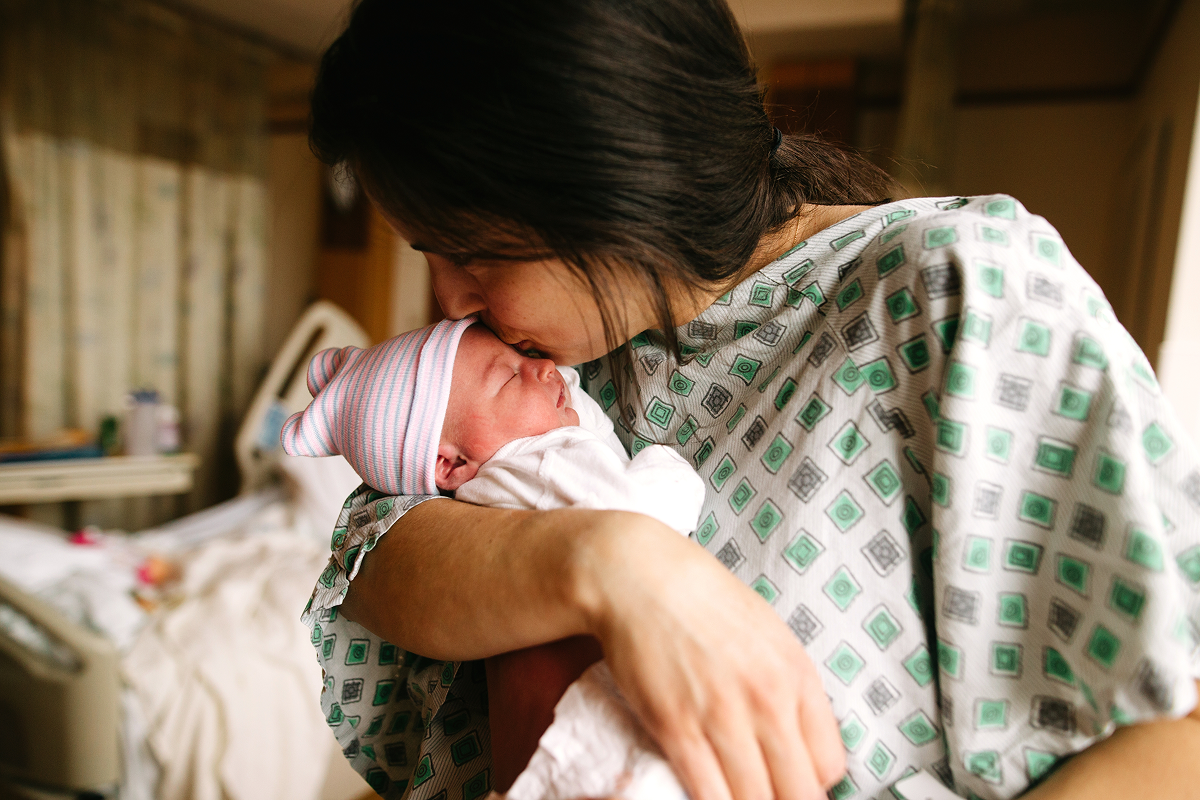The recent passage of the Texas bill SB8 has reinvigorated conversations about access to reproductive healthcare. However, there are a myriad of challenges facing women in America today. Compared to women in other high-income countries, like Australia or Germany, American women have long struggled to access the healthcare they need. Although the U.S. spends more on healthcare than other comparable countries, each year millions of American women report not seeking care due to costs, lack of insurance coverage, and high instances of chronic disease. In this piece, we’ll dive deeper into the state of women’s reproductive health.
Maternal health is at risk in America
Critical health needs in the maternal journey have largely been unmet in the U.S. for decades. Issues such as infertility, mental health, domestic burdens, and lack of support and access to care have put women at risk throughout their health journeys. More women going through fertility treatments, pregnancy, or early parenthood are also living anxiously in this new abnormal—a global pandemic.
Analyzing the state of women’s health today reveals the deep inequities faced by half the world’s population. However, according to the 2030 Agenda for Sustainable Development, gender and health equality goals for women and girls are not out of reach. It’ll require careful planning and coordination between health plans, employers, and technology. To get there, we first need to understand where we’re at.
Maternal and infant mortality rates
Among high-income countries, maternal mortality rates are highest in the US due to complications from pregnancy or childbirth. High rates of cesarean sections, lack of prenatal care, and increased rates of heart disease, obesity, and diabetes may contribute to the high rate among American women. More than half of maternal deaths occur in the postpartum period, with infections, heart muscle disease, and mental health conditions the leading causes.
What's more, the maternal mortality rate has been consistently rising throughout the past decades. Maternal mortality in the US is three times higher among African American mothers—with rates similar to those reported in developing countries—compared to caucasian mothers.
Similarly, the U.S. has a higher infant mortality rate than similarly developed countries. The leading causes include pregnancy complications, premature birth, and low birth weight. Infant mortality cuts across social and ethnic lines as well, skewing strongly towards women of color, and especially Black women.
Insufficient fertility care for women of color
Systemic racism and the inequality that exists within maternal care models are directly linked. Today, women of color experience deep disparities in care in comparison to their white counterparts. Among other difficulties, their fertility journeys are often significantly more challenging:
- Black women aged 33-44 had 2x odds of infertility after adjustment for socioeconomic status, correlates of pregnancy intent, and risk factors for infertility.
- Black women have higher miscarriage rates, especially in the 10-20 week gestation
- There was a marked difference in spontaneous miscarriage rates across races in a first-time IVF cycle: 14.6% in white women versus 28.9% in black women, 20.6% in Asian women, and 15.3% in Hispanic women.
- Black women experienced a significantly longer duration of infertility before seeking care than white women (4.3 vs. 3.3 years).
A recent study from the CDC examining the National ART (assisted reproductive technology use) Surveillance System (NASS) data demonstrated that Black women and other women of color have lower than average US ART utilization rates defined as the number of ART procedures per million women of reproductive age.
Maternal mental health
Feeling extreme emotions is expected during and immediately after pregnancy, but for some mothers, these emotions don’t simply pass with time. Each year, about 1 in 10 new or expecting moms will experience depression. Perinatal Mood Disorders (PMD) can develop during pregnancy or up to a year postpartum. Mothers experiencing postpartum depression (PPD) have 90% higher healthcare costs than mothers who don't. Although PMDs are prevalent, the lack of access to general mental health resources in the US exacerbates its effects.
A recent study found that mental health services in the U.S. are insufficient, despite more than half of Americans (56%) seeking help. The demand for mental health services is strong, with nearly six in 10 (56%) Americans seeking services either for themselves or for a loved one. However, the majority lack access, thus creating a mental health crisis in the U.S. PMD, PPD, and related maternal mental health problems are still generally misunderstood and stigmatized today. Despite the commonality, only half of women currently experiencing these symptoms receive mental health treatment. Some lack access to resources or willingness to seek help, while other mothers report feeling guilt for feeling depressed or anxious when caring for a chill. Alternatively, some fear repercussions at work in the form of reduced hours or reduced status that prompts many mothers to avoid seeking help.
The fertility journey can be highly detrimental to mental health as well. Multiple studies have uncovered that infertility often increases stress, depression, and anxiety, and recurrent pregnancy loss (RPL) can lead to post-traumatic stress disorder (PTSD) symptoms. Research has shown that women facing infertility have comparable levels of depression and anxiety to women battling cancer, heart disease, and AIDS/HIV. Additionally, a recent study that analyzed infertility patients’ reactions to treatments postponed by COVID-19 found that 66% of them reported that infertility remained the most significant stressor in their lives, causing them more distress than the pandemic.
All in all, untreated maternal mental health conditions accounted for $14.2 billion of economic cost, including related healthcare expenses and lost productivity or wages in 2017—but that number is likely higher now due to the COVID-19 pandemic.
Not all paths to parenthood have support
Each individual's path to pregnancy is unique, whether it’s through childbirth, surrogacy, or adoption. Not all of these paths have the robust support and expertise mothers need to thrive throughout the process. For example, although one in two LGBTQIA+ couples are starting families, employer health plans often exclude paths to parenthood like surrogacy and adoption. And for couples facing infertility, the experience can be expensive, emotionally taxing, and isolating, especially without mental health support.
For the 31% of companies that do offer fertility benefits, the most common approach by a wide margin is reimbursement: helping cover the cost of fertility medications (76%) and in vitro fertilization (IVF) treatments (77%). According to a 2020 Employee Benefits Survey of US employers:
- 24% cover fertility medications
- 24% cover in vitro fertilization treatments
- 14% cover visits with a geneticist, surrogacy, and other counselors
- 12% cover genetic testing to determine infertility issues
- 11% cover non-IVF fertility treatments
- Only 2% of organizations covered egg harvesting/freezing services
Job loss and the "she-cession"
The COVID-19 pandemic both revealed and exacerbated systemic inequities affecting women's health. Although the fatality rate of COVID-19 has been twice as high for men as for women, the pandemic has affected women more than men, both in the workplace and at home, leading to a "she-cession" among women, and especially working mothers.
An estimated 3 million women withdrew from the U.S. workforce due to the pandemic, four times the number of men who exited. According to a Boston Consulting Group survey, parents' time spent on education and household tasks increased from 30 to 59 hours per week during the pandemic. Women shouldered the bulk of that increase, and many had to withdraw from the workforce to accommodate childcare, homeschooling, and other caregiving needs.
Labor participation dropped to the lowest rate in decades, especially for women of color. Even amid a modest economic recovery, unemployment among Black women continues to rise. Women of color disproportionately account for single, working mothers in the US, and the childcare and caregiving needs during the pandemic forced many to cut hours or step back from the workforce entirely.
Maven prioritizes the health of women in the workplace
While the data may seem bleak, you and your organization can be part of the push to prioritize women's health. You can adopt innovative care models that provide the personalized support mothers and families need to thrive.
Maven is the most extensive care platform for women's and family health. We give mothers in your organization 24/7 access to virtual appointments with providers covering over 30+ women’s and family health specialties throughout their maternity journey, from family planning and fertility to pregnancy, postpartum, return to work, and parenting. Contact us today to find out how Maven can help your organization improve healthcare outcomes for women and men at every stage of parenthood.
Ready to get started with Maven?
See how Maven can support working families, retain talent, and reduce costs

Activate your Maven account today
Maven members have unlimited access to 24/7 care and 30+ types of providers. Check to see if you have access to Maven providers and resources today.
Explore Maven






.png)
.png)
.jpg)

